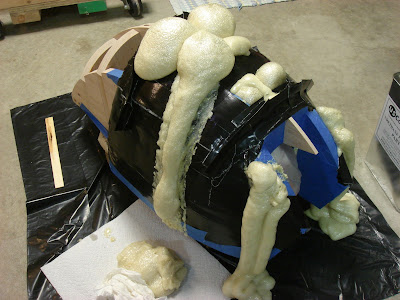 |
| Another view of the taped up plug before pouring. |
28 January 2012
Building the Tank Plug #4
 |
| The remaining pieces of the plug skeleton have been glued and screwed in place. At this point I began taping up the tunnel to prep for foam. |
 |
| I covered the bottom with painters tape just in case the foam spilled over too much. I also reinforced the tunnel tape with gorilla tape. |
 |
| Getting ready to pour. |
 |
| I used red party cups to mix small batches to fill each of the cavities. The chemical reaction creates a good deal of heat. |
 |
| Here's another shot the plug after removing as much tape as I could by hand. |
 |
| The grinder would fit in the tunnel so I used a Demel MultiMax to cut out most of the excess foam from. I have to do the rest by hand with a rasp and some sanding blocks. |
 |
| Filling in the tail end of the tank |
 |
| I used the same process as before for the remaining foam. |
 |
| Another shot of the plug so far. |
18 January 2012
Building the Tank Plug #3
Subscribe to:
Comments (Atom)





